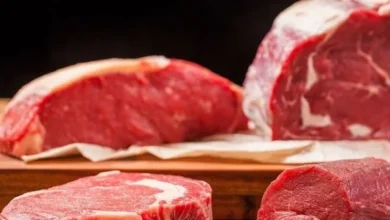
Can the U.S. Meat Industry Become More Eco-Friendly?
The Environmental Impact of the U.S. Meat Industry
The U.S. meat industry contributes to several environmental concerns:
Greenhouse Gas Emissions
Livestock farming, particularly cattle farming, is a major source of greenhouse gas emissions. Methane, produced during digestion in cows and other ruminants, is a potent greenhouse gas. According to the U.S. Environmental Protection Agency (EPA), agriculture accounts for nearly 10% of U.S. greenhouse gas emissions, with beef production being one of the largest contributors.
Land Use and Deforestation
The need for grazing land and animal feed crops results in significant land use. In some cases, this has led to deforestation and habitat loss, particularly in regions that export meat and feed to the U.S. In the U.S., the expansion of agricultural land can come at the expense of natural ecosystems.
Water Consumption
Meat production is incredibly water-intensive. For example, it takes about 1,800 gallons of water to produce just one pound of beef. This includes the water used by livestock, water for growing animal feed, and water required for processing. This high water demand puts pressure on local water supplies, especially in areas where water scarcity is a concern.
Waste Management
Livestock farming generates large amounts of waste, including manure. Improperly managed waste can contaminate water supplies and harm the environment. Managing waste efficiently is a challenge for the meat industry, as improper disposal can lead to soil and water pollution.
Current Efforts to Make the U.S. Meat Industry More Eco-Friendly
Despite these challenges, there are several initiatives and technological innovations aimed at reducing the environmental impact of meat production:
Sustainable Farming Practices
Some meat producers in the U.S. are adopting more sustainable farming practices, such as rotational grazing and integrated crop-livestock systems. These methods improve soil health, prevent overgrazing, and reduce the need for chemical fertilizers and pesticides. By implementing these practices, farmers can reduce their environmental footprint while maintaining productivity.
Alternative Feed for Livestock
One promising area of research is the development of alternative feed for livestock that can reduce methane emissions. Studies have shown that adding seaweed to cattle feed can reduce methane emissions by up to 80%. This innovative approach could significantly lower the environmental impact of meat production, particularly in beef farming.
Methane Capture Technologies
New technologies are being developed to capture methane emissions from livestock. These technologies allow farmers to capture methane before it escapes into the atmosphere. Once captured, methane can be converted into energy and used to power farm operations. This approach not only reduces emissions but also provides a renewable energy source.
Plant-Based and Lab-Grown Meat Alternatives
The rise of plant-based and lab-grown meat alternatives is one of the most significant developments in the meat industry. Companies like Beyond Meat and Impossible Foods are leading the way with plant-based products that replicate the taste and texture of traditional meat but without the environmental impact. Lab-grown meat, produced from cultured cells, also offers a way to produce meat with far fewer environmental costs. These alternatives could help reduce the need for traditional livestock farming, thereby lowering the overall environmental footprint of the meat industry.
Encouraging Reduced Meat Consumption
Many environmental advocates suggest that reducing meat consumption, particularly beef, is one of the most effective ways to reduce the environmental impact of the meat industry. Shifting to a more plant-based diet or simply consuming less meat could help lower greenhouse gas emissions, reduce land and water use, and decrease overall environmental strain.
The Role of Government and Policy
Government policy plays a crucial role in the sustainability of the meat industry. The U.S. government has introduced several initiatives that encourage sustainable farming practices, such as conservation programs and grants for research into sustainable technologies. However, there is room for more comprehensive policy changes.
Stricter regulations on methane emissions, water use, and land conservation could help push the meat industry toward greater sustainability. Additionally, government support for the development of alternative proteins and technologies could accelerate the transition to a more eco-friendly meat production system.
The Future of an Eco-Friendly U.S. Meat Industry
While the U.S. meat industry faces significant environmental challenges, there are many opportunities for improvement. By adopting sustainable farming practices, embracing innovative technologies, and exploring alternative proteins, the industry can reduce its environmental footprint and contribute to a more sustainable food system.
A more eco-friendly future for the meat industry will require collaboration among farmers, researchers, policymakers, and consumers. By prioritizing sustainability and adopting environmentally responsible practices, the industry can help build a greener, more sustainable food system for the future.
Conclusion

The U.S. meat industry has made strides toward sustainability, but more work is needed to reduce its environmental impact. Through sustainable practices, innovation in livestock feed and waste management, and the growth of plant-based and lab-grown meat alternatives, the industry can become more eco-friendly. By supporting these efforts, the meat industry has the potential to contribute to a healthier planet while still meeting the demand for meat.
As consumers, businesses, and policymakers work together to prioritize sustainability, the future of the U.S. meat industry can be both environmentally responsible and economically viable. With continued innovation and a commitment to eco-friendly practices, the U.S. meat industry can lead the way toward a more sustainable future.






One Comment